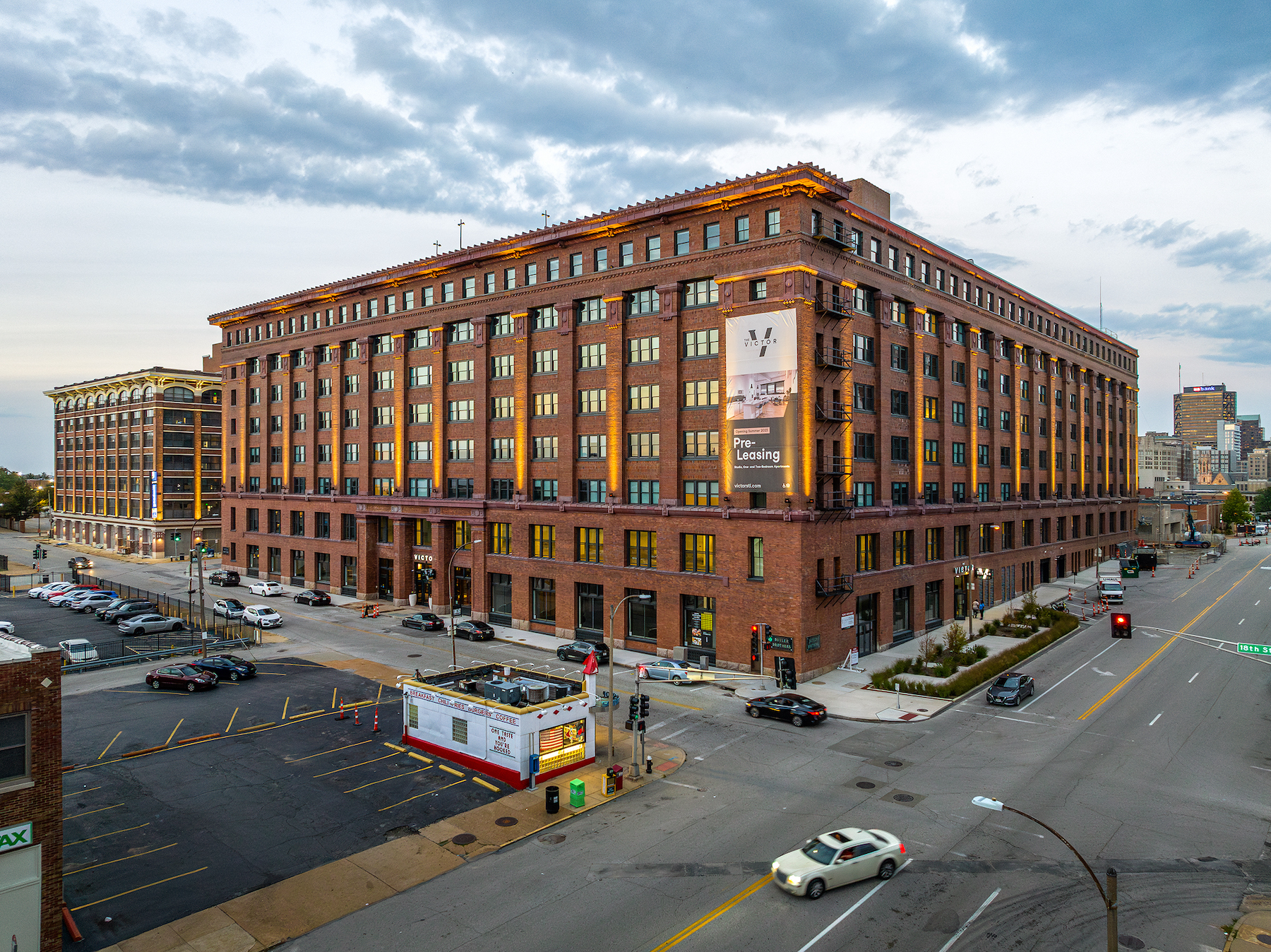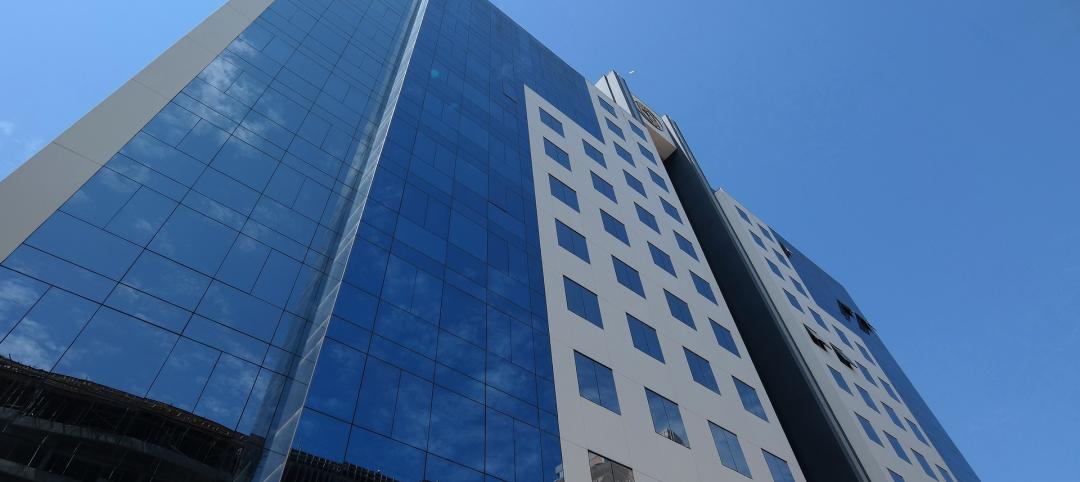The Butler Brothers Building opened in 1906, in St. Louis’s former Garment District. The 735,000-sf building served as a warehouse distribution center, and at the time of its construction was one of the largest reinforced concrete structures west of the Mississippi River.
Last June was the one-year anniversary of the completion of this building’s adaptive reuse transformation as The Victor, a multifamily community with nearly 400 apartments, retail and coworking spaces, and amenities.
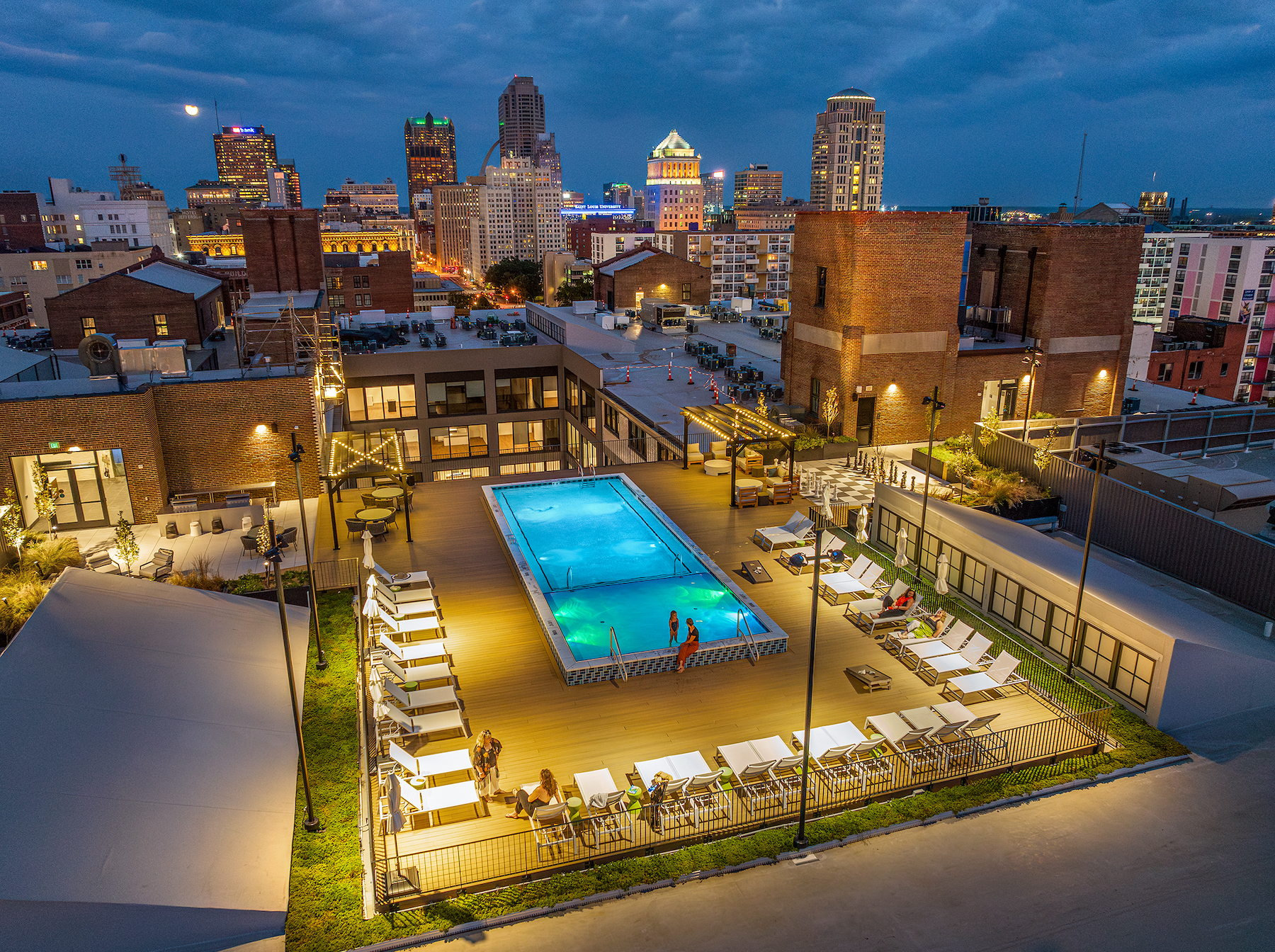
The Victor brought back to life a building that had been vacant for more than two decades, said Joel Fuoss, AIA, LEED AP, a Principal with Trivers, the architect-interior designer on this $130 million project, which was developed by Development Services Group.
Residents of The Victor have access to amenities that include an expansive rooftop terrace with a pool, a pickleball court, sundeck, dog park, fitness center with yoga and Pilates studios and a golf simulator, a parking garage, coworking and conference spaces, and outdoor courtyards. The building itself is located next to St. Louis CITY SC’s CityPark soccer stadium.
The apartments range from a 531-sf studio that starts at $1,345 per month to a 1,384-sf two-bedroom unit starting at $2,578 per month.
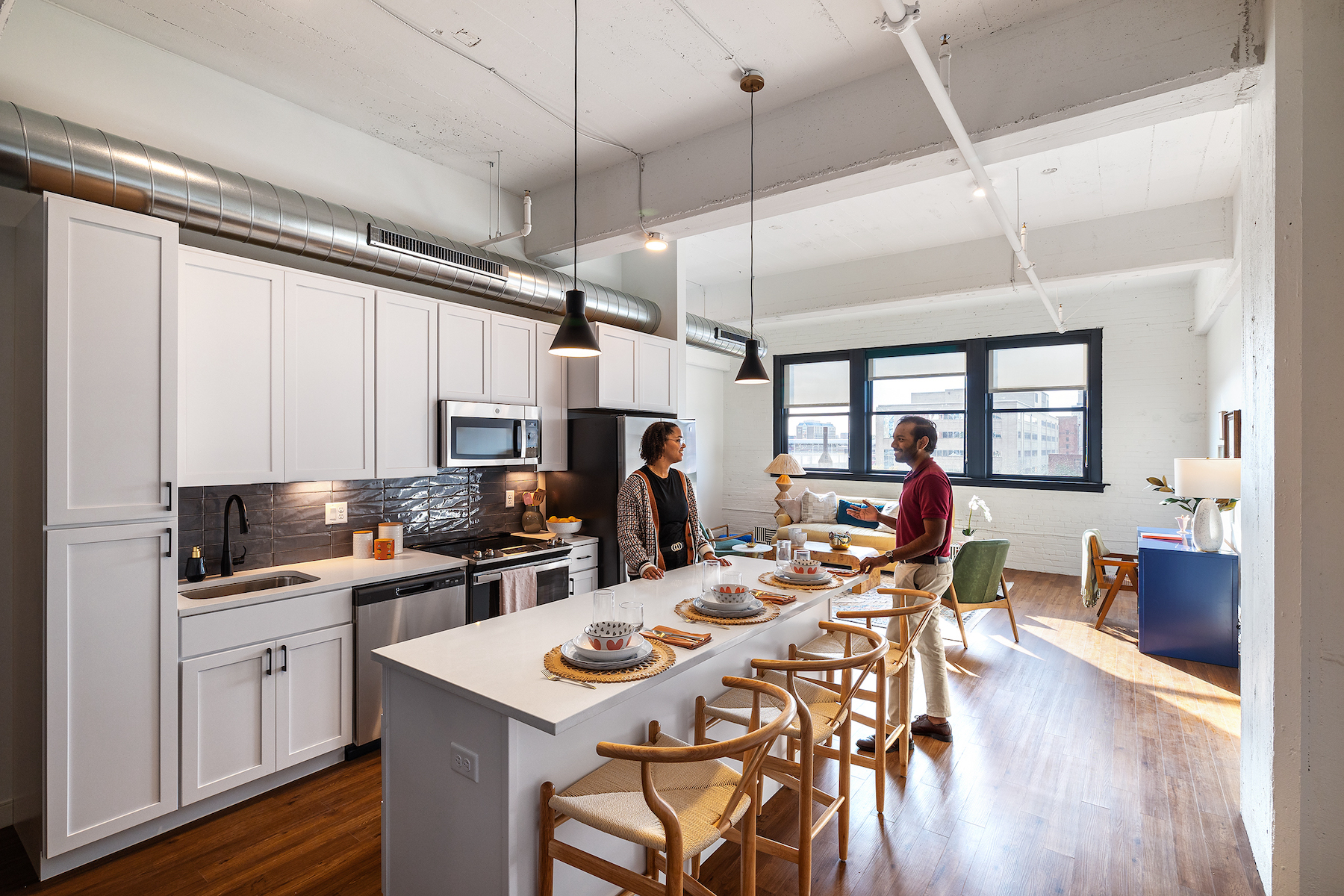
Adaptive reuse respects the past
Trivers and its design team restored the building’s exterior brick to its original color and revitalized the remaining terracotta cornices. The design retained the building’s clam-shell style garage doors that once opened for horse-drawn wagons. The building’s history was also incorporated throughout the interior’s renovation, including patterns and colors from early 20th Century fashion trends, and an oversized chessboard on one of the rooftop lounges that acknowledges the building’s location in a district and the former Harmonie Hall site that hosted the 1886 World Chess Championship.
Gary Prosterman, President and CEO of Development Services Group, said that his company and a team led by members of Trivers and Paric Corp., the project’s general contractor, conducted due diligence on the building a year before construction started to identify and address any problematic issues. “An undertaking this significant would not be p possible without the attention to detail and historic building expertise that the Trivers team brings to the table,” he said.
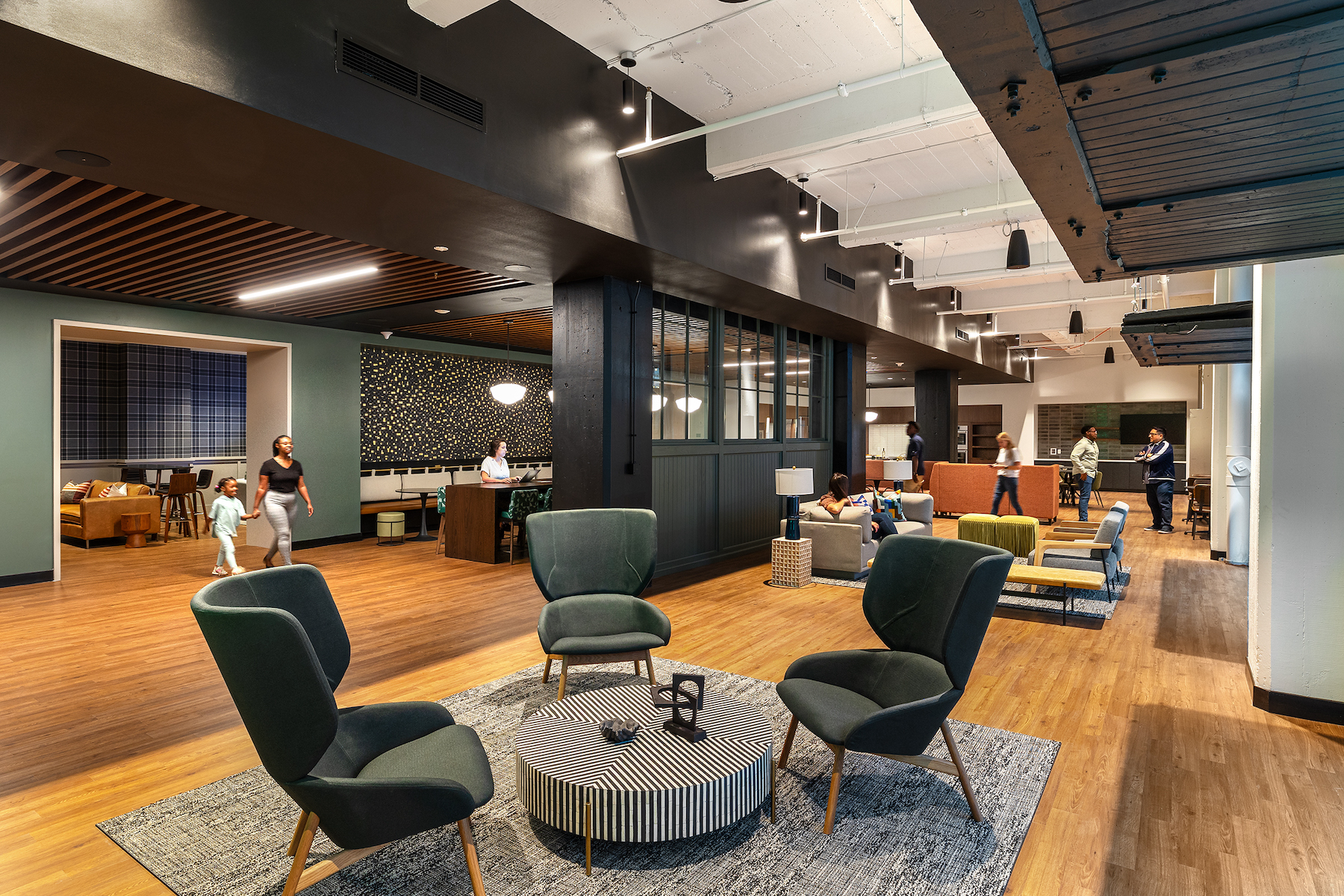
By repurposing the building’s existing concrete and masonry, the building team minimized the need to extract and produce new materials, which are carbon intensive. “The embodied carbon put into this building nearly 120 years ago would take St. Louis’ Forest Park [neighborhood] another 100 years to offset if built today,” said Fuoss.
Other AEC firms on the project team included IMEG (MEP engineer), KPFF Consulting Engineers (SE), Civil Design Inc. (CE), Arbolope Studio (landscape architect), Reed Burkett Lighting Design (lighting designer), Cohen Hilberry Architects (accessibility consultant), and Wollenburg Building Conservation (masonry consultant).
Related Stories
Adaptive Reuse | Mar 21, 2024
Massachusetts launches program to spur office-to-residential conversions statewide
Massachusetts Gov. Maura Healey recently launched a program to help cities across the state identify underused office buildings that are best suited for residential conversions.
Adaptive Reuse | Mar 15, 2024
San Francisco voters approve tax break for office-to-residential conversions
San Francisco voters recently approved a ballot measure to offer tax breaks to developers who convert commercial buildings to residential use. The tax break applies to conversions of up to 5 million sf of commercial space through 2030.
Sustainability | Mar 13, 2024
Trends to watch shaping the future of ESG
Gensler’s Climate Action & Sustainability Services Leaders Anthony Brower, Juliette Morgan, and Kirsten Ritchie discuss trends shaping the future of environmental, social, and governance (ESG).
Adaptive Reuse | Mar 7, 2024
3 key considerations when converting a warehouse to a laboratory
Does your warehouse facility fit the profile for a successful laboratory conversion that can demand higher rents and lower vacancy rates? Here are three important considerations to factor before proceeding.
Urban Planning | Feb 5, 2024
Lessons learned from 70 years of building cities
As Sasaki looks back on 70 years of practice, we’re also looking to the future of cities. While we can’t predict what will be, we do know the needs of cities are as diverse as their scale, climate, economy, governance, and culture.
Adaptive Reuse | Feb 4, 2024
Corporate modernist buildings increasingly popular fodder for adaptive reuse projects
Beginning in the 1970s adaptive reuse projects transformed 19th and early 20th Century buildings into distinctive retail destinations. Increasingly, developers of adaptive reuse projects are targeting outmoded corporate buildings of the 1950s to 1980s.
Luxury Residential | Jan 30, 2024
Lumen Fox Valley mall-to-apartments conversion completes interiors
Architecture and interior design firm Morgante Wilson Architects (MWA) today released photos of its completed interiors work at Lumen Fox Valley, a 304-unit luxury rental community and mall-to-apartments conversion.
Senior Living Design | Jan 24, 2024
Former Walgreens becomes affordable senior living community
Evergreen Real Estate Group has announced the completion of Bellwood Senior Apartments. The 80-unit senior living community at 542 25th Ave. in Bellwood, Ill., provides independent living options for low-income seniors.
Adaptive Reuse | Jan 23, 2024
Adaptive reuse report shows 55K impact of office-to-residential conversions
The latest RentCafe annual Adaptive Reuse report shows that there are 55,300 office-to-residential units in the pipeline as of 2024—four times as much compared to 2021.
Adaptive Reuse | Jan 18, 2024
Coca-Cola packaging warehouse transformed into mixed-use complex
The 250,000-sf structure is located along a now defunct railroad line that forms the footprint for the city’s multi-phase Beltline pedestrian/bike path that will eventually loop around the city.



